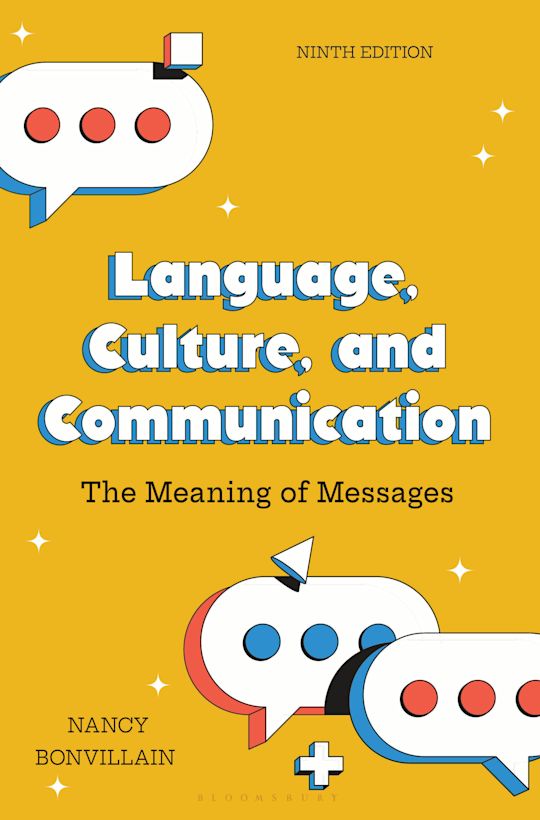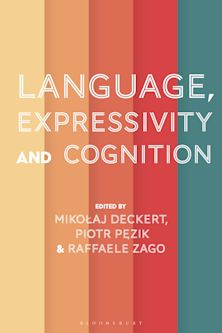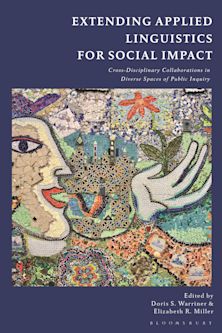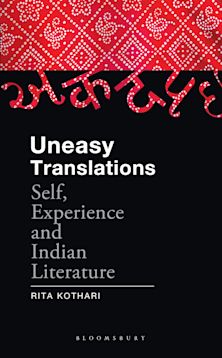- Home
- ACADEMIC
- Linguistics
- Sociolinguistics and Linguistic Anthropology
- Language, Culture, and Communication
Inspection copy added to basket
Choose your preferred format. If you would prefer an ebook and it is not displayed below, please visit our inspection copies page.
Please note ebook inspection copies are fulfilled by VitalSource™.
Buy from Bloomsbury eTextBooks
You are now leaving the Bloomsbury Publishing website. Your eBook purchase will be with our partner https://www.vitalsource.com.
Your credit card statement will show this purchase originating from VitalSource Technologies. They will also provide any technical assistance you might require.
You must sign in to add this item to your wishlist. Please sign in or create an account
Description
Language, Culture, and Communication introduces students to the topics and theories of the broad field of linguistic anthropology by examining the multifaceted meanings and uses of language. It emphasizes the ways in which language encapsulates speakers' meanings and intentions. Through language structure and language use, speakers convey messages about their own identities, their understandings of the world and their place in it. The book includes discussion of cultural and symbolic meanings conveyed by language and the social and political dimensions of language use.
New to the Ninth Edition:
- New Chapter 7, “Digital Communication,” discusses technological change, social media, artificial intelligence, and the rapid development of various systems and platforms for communication
- New Chapter 6, “Signed Languages,” offers an expanded discussion of ASL vocabulary and grammar as well as language practices in Deaf communities with an emphasis on a global and international perspective
- New discussion of African American Vernacular English (AAVE) stresses the intersection of language and lived experience
- New case studies in every chapter highlight central concepts so that students can focus directly on understanding the many faceted goals of language in use
- Expanded discussion of language and nation building in multilingual communities (including code switching and translanguaging) emphasizes how our speaking styles are “borderless”
Table of Contents
Chapter 2: The Form of the Message
Chapter 3: Language and Cultural Meaning
Chapter 4: Contextual Components: Outline of an Ethnography of Communication
Chapter 5: Communicative Interactions
Chapter 6: Digital Communications and Signed Languages
Chapter 7: Learning Language
Chapter 8: The Acquisition of Communicate Competence
Chapter 9: Societal Segmentation and Linguistic Variation: Class and Race
Chapter 10: Language and Gender
Chapter 11: Multilingual Nations
Chapter 12: Multilingual Communities
Chapter 13: Language and Institutional Encounters
Product details

| Published | 05 Feb 2026 |
|---|---|
| Format | Ebook (Epub & Mobi) |
| Edition | 9th |
| Extent | 432 |
| ISBN | 9798216200635 |
| Imprint | Bloomsbury Academic |
| Illustrations | 30 bw illus, 5 bw photos |
| Publisher | Bloomsbury Publishing |
About the contributors
Reviews
-
Changes made in this latest edition of Nancy Bonvillain's Language, Culture, and Communication have breathed new life into this classic text. Consolidation of the information on signed languages into a single cohesive chapter and the addition of Dillon Mahoney's contribution on language and digital communication and social media have improved upon an already spectacular student resource.
Aaron Thornburg, Eastern Oregon University
-
This revised edition of Language, Culture, and Communication stands out as an essential textbook for students and instructors in linguistic anthropology, and for anyone curious about the intricate ways in which language reflects cultural identities, influences, and maintains social structures, as well as promotes human interactions across diverse contexts. Bonvillain brilliantly uses case studies from across the world to illustrate each topic, making them accessible and engaging.
Désiré Hounguès, Savannah College of Art and Design
-
The new edition of Language, Culture, and Communication offers thoughtful and timely updates that make it even more engaging and relevant for today's students. I especially appreciate the expanded, stand-alone chapter on signed language, which delves into its history, linguistic roots, and cultural significance. The extensive discussion of American Sign Language (ASL) and the recognition of Deaf individuals as bilingual and bicultural represent a major step forward in how we teach and understand language diversity. This is a topic that frequently sparks meaningful conversations in my classes, and I am pleased to see it addressed so comprehensively in this edition.
The revised chapter on digital communication is equally impressive, capturing the nuances of how social media shapes language use and identity. It speaks directly to younger students who navigate much of their communication online, helping them connect course concepts to their own experiences.
The coverage of African American Vernacular English (AAVE) is both balanced and insightful, affirming its linguistic legitimacy and cultural importance while addressing broader social perceptions. In addition, the book's exploration of multilingual communities reflects the complex linguistic landscape of modern urban life in the United States, where multiple languages and cultural influences coexist and interact daily.
Each chapter concludes with engaging discussion questions that lend themselves well to classroom dialogue or written reflection. I look forward to incorporating many of them into my own teaching.
Overall, this new edition is a significant and timely improvement-an inclusive, engaging, and intellectually rich resource for anyone studying or teaching the intricate connections between language, culture, and communication.Dr. Luisa B. Millington, Community College of Vermont
-
The ninth edition of Language, Culture, and Communication remains a leading and comprehensive resource in the field of general sociolinguistics, serving as a practical text for courses focused on cultural perspectives, particularly for ESOL teacher preparation programs. This new edition extends beyond theory by offering expanded and more detailed chapters, enhanced case study examples, and well-defined discussion questions at the end of each chapter-promoting critical thinking and valuable opportunities for reflection. Notably, the updated emphasis on Digital Communication and Signed Languages offers timely insights into the complexities of communication in an increasingly diverse global context.
Luis G. Bejarano, Valdosta State University
-
Language, Culture, and Communcation is one of the few comprehensive textbooks for linguistic anthropology available. Its sophisticated and thorough synthesis of theories and topics from linguistics and anthropology make it an invaluable text for teaching the analysis of language in cultural context. I don't know of any other introductory linguistic anthropology textbooks, for instance, that cover language structure, conversation analysis, and theoretical contributions from linguistic anthropology such as translanguaging and computer mediated communication, all in a format accessible to undergraduate and graduate students. The book spans the history of linguistic anthropology, bringing foundational frameworks such as ethnography of communication into the 21st century through case studies relevant to today. Updates to the ninth edition assure that the text is current with contemporary debates in linguistic anthropology, and its intersectional approach includes a new chapter on signed languages and enhanced discussions of the intersections among language, gender, sexuality, national identity, and race.
Robin Riner, Marshall University
-
The updates in this 9th new edition such as Signed Languages and their Communities of Practice are clearly more relatable to students and teachers who are interested in obtaining a contemporary view of world languages, cultures, communication styles, and practices. The organization of the chapters is absolutely more student and teacher user friendly. I love the updated chapter structure organized by guided subtitles/key terms on the content and focus of each topic, which draws readers' attention to the structure of ethnolinguistic knowledge and terminologies that serves as foundational access to understand topics under examination. The in-depth content coverage supported by newly cited interesting case studies has made invisible, hidden, and unfamiliar patterns of communication in world cultures to be more visible, more accessible, more friendly, and which can definitely empower teachers and students to examine and appreciate them scholarly, critically, and contrastively with deep engagement.
The chapter about Digital Communication creates a much-needed modern and comprehensive scholarly coverage of numerous interesting topics such as social media, memes, hashtags, illustrated by compelling examples from various regions of the world regarding multiple language uses and the impact of the English language upon their uses especially on the web.
A critical perspective is seamlessly integrated in each chapter presentation through addressing identity and ideology issues when discussing signed language and digital communication.
Finally, I love the discussion questions added to each chapter that interactively reenforce the content learned and extend further thinking, analysis, and application.Saihua Xia, Murray State University



































